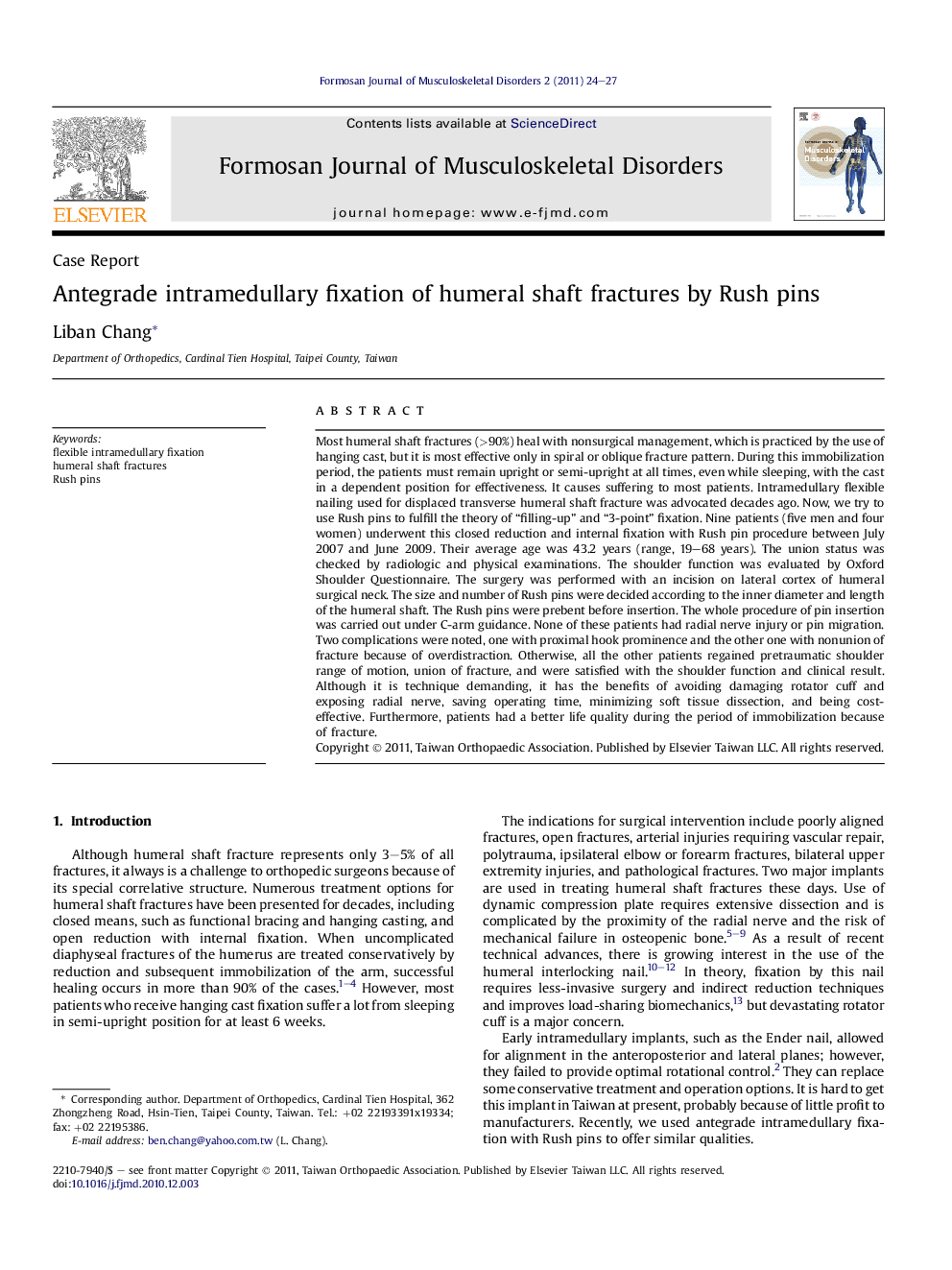| کد مقاله | کد نشریه | سال انتشار | مقاله انگلیسی | نسخه تمام متن |
|---|---|---|---|---|
| 4055468 | 1603828 | 2011 | 4 صفحه PDF | دانلود رایگان |
عنوان انگلیسی مقاله ISI
Antegrade intramedullary fixation of humeral shaft fractures by Rush pins
دانلود مقاله + سفارش ترجمه
دانلود مقاله ISI انگلیسی
رایگان برای ایرانیان
کلمات کلیدی
موضوعات مرتبط
علوم پزشکی و سلامت
پزشکی و دندانپزشکی
ارتوپدی، پزشکی ورزشی و توانبخشی
پیش نمایش صفحه اول مقاله

چکیده انگلیسی
Most humeral shaft fractures (>90%) heal with nonsurgical management, which is practiced by the use of hanging cast, but it is most effective only in spiral or oblique fracture pattern. During this immobilization period, the patients must remain upright or semi-upright at all times, even while sleeping, with the cast in a dependent position for effectiveness. It causes suffering to most patients. Intramedullary flexible nailing used for displaced transverse humeral shaft fracture was advocated decades ago. Now, we try to use Rush pins to fulfill the theory of “filling-up” and “3-point” fixation. Nine patients (five men and four women) underwent this closed reduction and internal fixation with Rush pin procedure between July 2007 and June 2009. Their average age was 43.2 years (range, 19-68 years). The union status was checked by radiologic and physical examinations. The shoulder function was evaluated by Oxford Shoulder Questionnaire. The surgery was performed with an incision on lateral cortex of humeral surgical neck. The size and number of Rush pins were decided according to the inner diameter and length of the humeral shaft. The Rush pins were prebent before insertion. The whole procedure of pin insertion was carried out under C-arm guidance. None of these patients had radial nerve injury or pin migration. Two complications were noted, one with proximal hook prominence and the other one with nonunion of fracture because of overdistraction. Otherwise, all the other patients regained pretraumatic shoulder range of motion, union of fracture, and were satisfied with the shoulder function and clinical result. Although it is technique demanding, it has the benefits of avoiding damaging rotator cuff and exposing radial nerve, saving operating time, minimizing soft tissue dissection, and being cost-effective. Furthermore, patients had a better life quality during the period of immobilization because of fracture.
ناشر
Database: Elsevier - ScienceDirect (ساینس دایرکت)
Journal: Formosan Journal of Musculoskeletal Disorders - Volume 2, Issue 1, February 2011, Pages 24-27
Journal: Formosan Journal of Musculoskeletal Disorders - Volume 2, Issue 1, February 2011, Pages 24-27
نویسندگان
Liban Chang,